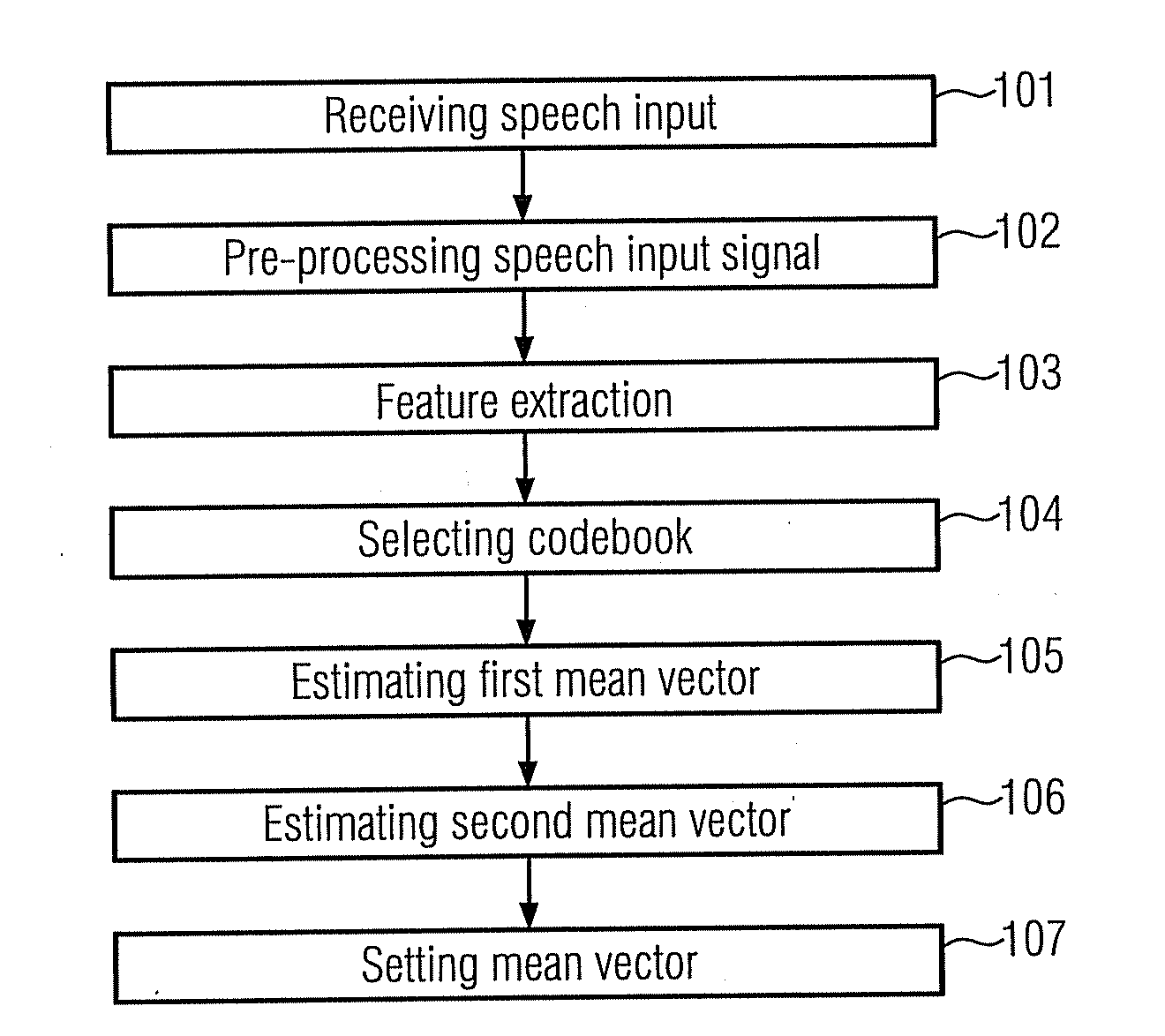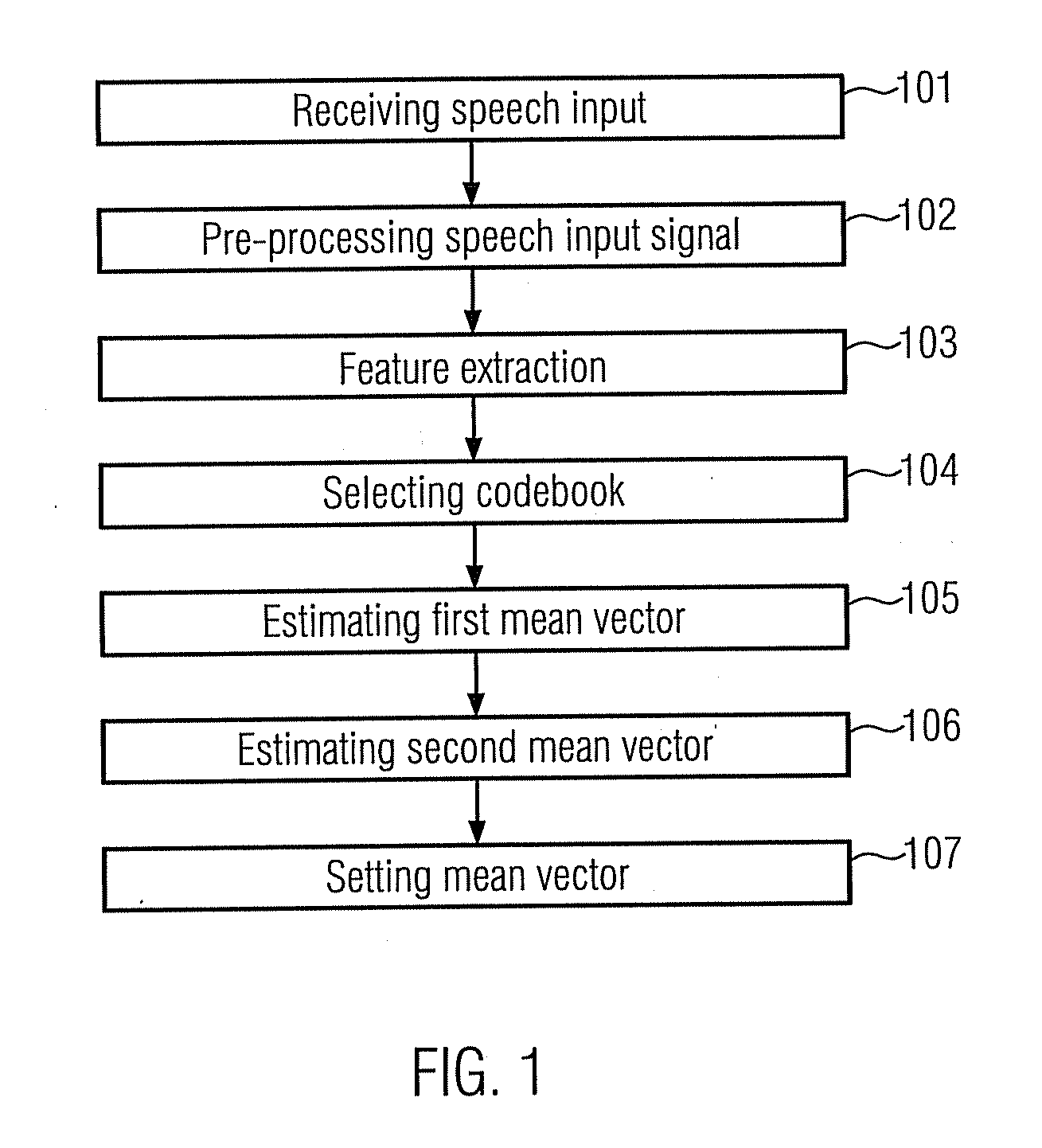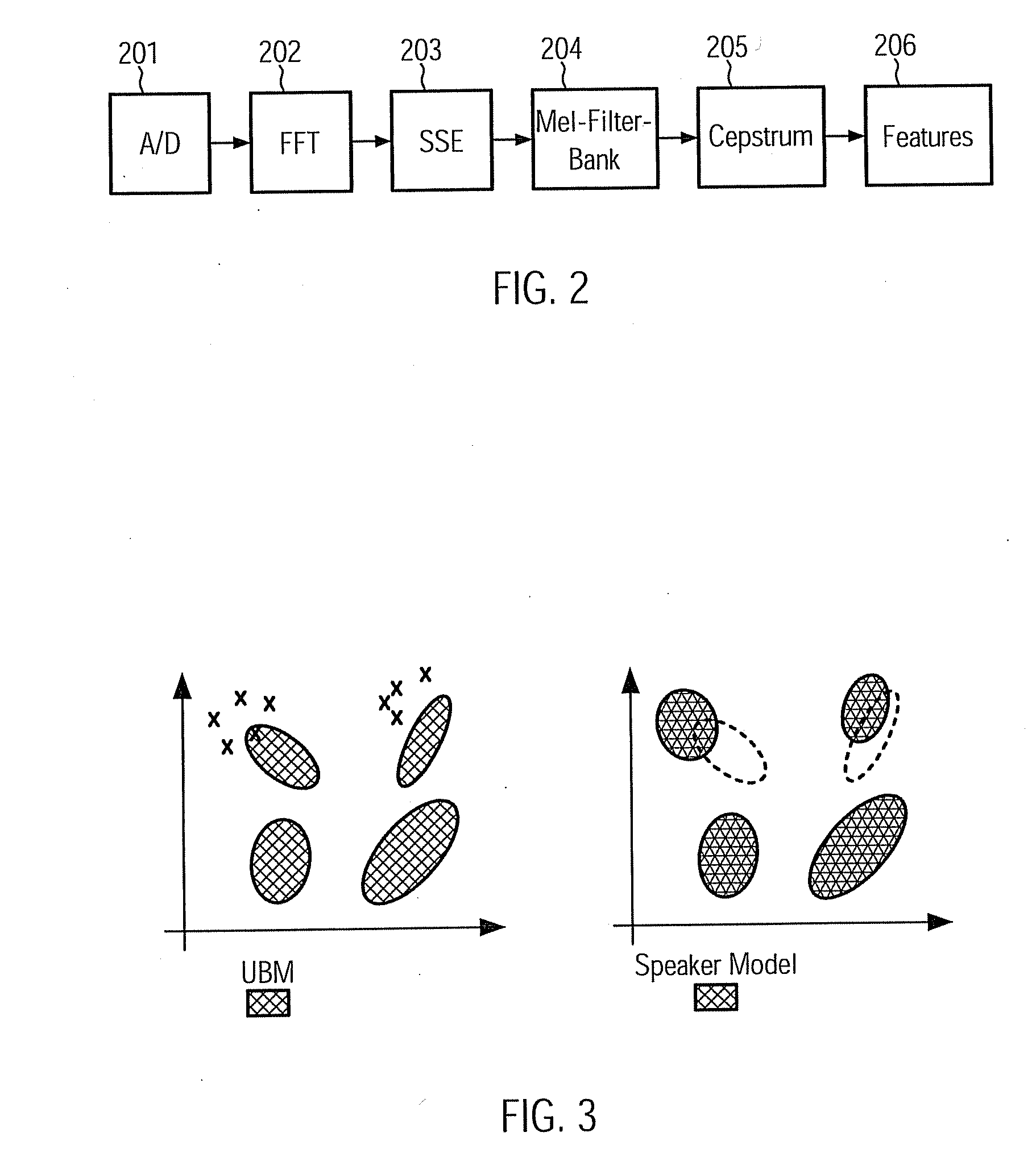Method for Adapting a Codebook for Speech Recognition
a speech recognition and codebook technology, applied in speech analysis, speech recognition, instruments, etc., can solve the problems of not always correct speaker change detection, poor recognition reliability, and suffer under ambient noise, so as to reduce distortion and reduce noise components
- Summary
- Abstract
- Description
- Claims
- Application Information
AI Technical Summary
Benefits of technology
Problems solved by technology
Method used
Image
Examples
Embodiment Construction
[0052]FIG. 1 shows a flow diagram of an example of a method for adapting a codebook for speech recognition. The steps of this method in general will be performed in an automated way using a computing system, in particular, a digital signal processor. A corresponding apparatus or system for performing the method may be provided, for example, in a vehicular cabin to be used for a hands-free telephony system or a speech controlled navigation device; as a further possibility, for example, the method may be implemented in a personal digital assistant (PDA) to provide a speech control of the mobile device. Other fields of application are possible as well.
[0053]In a first step 101, a speech input or utterance is received. Typically, the speech input is received by one or more microphones yielding a speech input signal. The microphone may be directional microphones or may be arranged in a microphone array for a beamformer. Alternatively, it is also possible to use one or more conventional o...
PUM
 Login to View More
Login to View More Abstract
Description
Claims
Application Information
 Login to View More
Login to View More - R&D
- Intellectual Property
- Life Sciences
- Materials
- Tech Scout
- Unparalleled Data Quality
- Higher Quality Content
- 60% Fewer Hallucinations
Browse by: Latest US Patents, China's latest patents, Technical Efficacy Thesaurus, Application Domain, Technology Topic, Popular Technical Reports.
© 2025 PatSnap. All rights reserved.Legal|Privacy policy|Modern Slavery Act Transparency Statement|Sitemap|About US| Contact US: help@patsnap.com



